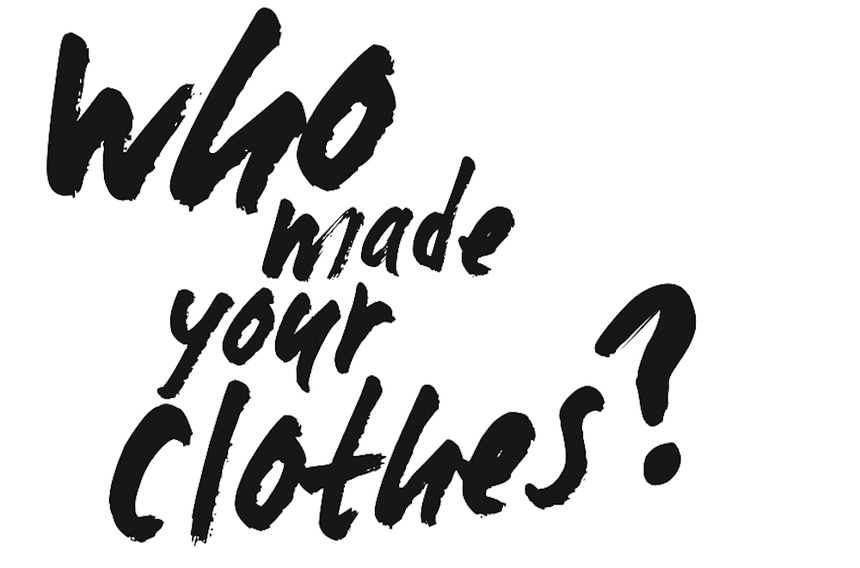An.thro.po.cene
An·thro·po·cene
/ˈanTHrəpəˌsēn/
adjective
relating to or denoting the current geological age, viewed as the period during which human activity has been the dominant influence on climate and the environment.
"we've become a major force of nature in this new Anthropocene epoch"
noun
the current geological age, viewed as the period during which human activity has been the dominant influence on climate and the environment.
"some geologists argue that the Anthropocene began with the Industrial Revolution"
*Cited from dictionary.com
On April 24, 2013, the Rana Plaza collapse killed over 1,100 garment workers in Bangladesh and wounded over 2,200 more. The incident left consumers all over the world questioning who makes the clothes we wear everyday and in what kind of conditions?
Documentaries like The True Cost (If you haven’t watched it yet, it is free to view on Netflix.) shine a light on how the fast fashion industry depletes the earth’s resources and leverages slave labor to pass on a cheap cost to the end consumer. We live in a time where clothing is disposable and often costs less than a meal. How can something that needs to be grown, harvested, spun, woven, cut, stitched, labeled, packaged and shipped cost a couple of dollars? Fashion and the textile industry at large are tied to many other aspects of life, including culture, politics, agriculture and the environment. Through our shopping choices we can collectively influence how our clothes are sourced, produced, distributed, and as a result change the world in a real and meaningful way.
Historically, people learned to sew in order to make their clothing and home textiles. After the Industrial Revolution, when ready made clothing was available, it still needed to be kept up, altered and repaired. And, it was expensive. Sewing was then a means to recreate designer looks in a more affordable way.
As someone who loves fashion, the collapse of the Rana Plaza factory really got my attention. Since then, I have become much more aware of the impact of my decisions can have on the world at large. Getting started was tough! Not every brand is transparent in their sourcing and production. Making every item isn’t an option either. It is too easy to get stuck comparing choices or to just “opt out”. The truth is, there really isn’t a perfect choice. The most sustainable clothing is that which we already own. That being said, if you would like to see how your favorite brands rank, check the Fashion Transparency Index.
The easiest change that we can make to reduce our impact is to buy less and properly care for what we already own. Instead of buying new, consider vintage and pre-owned, rent or even swap with friends! I know all easier said than done, right? But consider doing just one thing differently. Right now, the average garment is worn seven times before it is discarded. Seven times. Imagine if we were to double that number and wear each clothing item 14 times? Radical, right?
When I was growing up, there used to be something called, “Cost per wear”. I have no idea where I learned it, but it was a fairly common concept. You check the price of the item, consider how many other things you already have to go with it, and try to imagine the number of times you will wear the garment. For example, say I bought a top for $80. If I wear that 7 times, it costs me $11.42 cents each time I wear it. A sweater for $100, $14.28. You get the point. Now, what if I only chose to purchase items that I really, really loved and took exceptional care of them. The cost per wear goes down exceptionally. Perhaps that sweater might last a decade or two and only cost me pennies per wear. Think about this next time you shop.
As conscious consumers, it’s more important than ever to educate ourselves. Nobody invented a magical, cheaper way to make clothing, and fabric didn’t drop in price. We just began exploiting developing countries and caring less about the damage along the way. By asking #WhoMadeMyClothes, demanding transparency, and vocalizing our objections we make a positive difference for the people making our clothes and goods. Real change can start with us.
This week, follow me on Instagram with the hashtag #whomademyclothes and #LovedClothesLast and check back here to learn more about how to take fashion into your own hands and to give a kind of noblesse oblige to your wardrobe.
XOXO, Hilarie

